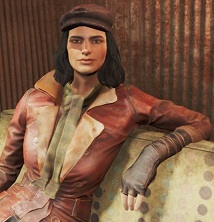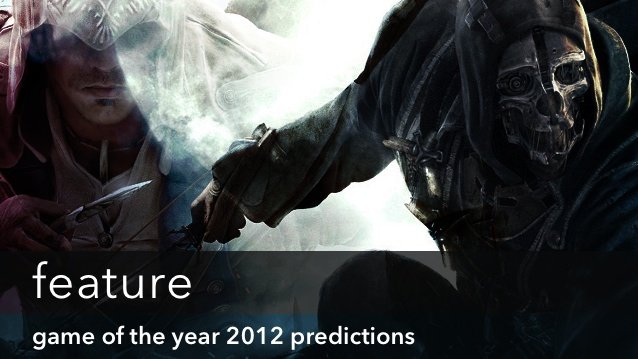

Fable 3 is without question one of the biggest and most anticipated releases of the year. After spending a week with the game I can say with certainty that it’s worth the price of admission, but it’s not perfect. Developed by Lionhead Studios and published by Microsoft Game Studio, Fable 3 takes the franchise in a more accessible direction, opening up the world of RPG games to anyone who cares to pick up a controller.
The game begins by taking control of either the son or daughter of the hero from Fable 2, the prince or princess of the fantasy kingdom of Albion. Choosing to be the prince means the character’s father was the hero, while choosing the princess means it was the character’s mother. The game takes place 50 years after the events of Fable 2. The industrial revolution has swept across the land, and things in Albion have changed drastically. The protagonist’s brother is currently the king, but he’s ruling more like a tyrant. From there, destiny requires leaving the safety of the castle (with a faithful dog of course), becoming a hero, garnering the support of the people, overthrowing the oppressive brother/king and becoming the ruler of Albion. How this is gone about is up to the player to decide.
The first thing to know about Fable 3 is that it’s pure and simple fun. Traveling through the land of Albion is an enjoyable experience, interacting with the locals, completing quests, battling monsters and saving the day. The second thing to know is that Fable 3 is flawed in some key areas which prevents it from being an elite game.
As soon as the game turns on, Fable 3 is noticeably similar to Fable 2. The graphics won’t blow anyone away. It’s not the kind of game that relies on eye-popping graphics to lure the gamer in. While there are better looking games on the market, it shouldn’t lessen the enjoyment of playing Fable 3.
The basics of combat are untouched from the previous Fable games. The hero has three types of weapons to use during combat: melee, range and magic. What has changed is how these weapons change over time. As opposed to previous Fable games, where players would modify their weapons with items found in the game, now weapons evolve over time based on how they’re used. Each weapon has multiple ‘Achievements’ associated with it and completing these Achievements cause the weapon to evolve. A sword may develop fire damage after it has killed 200 enemies. Some gamers have complained that this takes away from the customization of the first two Fable games, and it does make playing the game a much more streamlined process.
Controlling combat is the familiar button mashing affair that gamers are used to with Fable. Battles normally boil down to repeatedly hitting the X button (melee attack) with the occasional magic spell thrown in for good measure. The combat can get boring quickly, but every now and then the hero pulls out a fancy finishing move that makes it worth not checking out during battle. The problem is the finishing moves are completely random and players can do the same combat actions 10 times yet only see the finishing move once.
Even if combos were integrated into the combat, the camera would still be a problem. During battle, at random intervals, finishing moves will be in slo-mo and the camera will zoom in on the downed enemy. Not only is this disorientating when surrounded by enemies, but while the camera is zooming the other enemies don’t stop attacking. While battling five wolves, the camera may zoom in to show one being killed, meanwhile the other four wolves are still attacking and draining life. Since the game isn’t difficult this normally won’t result in death, but it’s still poor design.
The game is unofficially split into three sections. The first section involves traveling throughout Albion, gaining support from the people, and leading the revolution against the king. Heroes can gain this support by completing quests or interacting with people. Many of the quests will result in making a promise to a leader of the town (more on those later). Interacting with the people directly is a great way to earn friends and can eventually lead to marriage and children. Unlike previous Fable games, only one person can be influenced at a time. To further emphasize this, starting an interaction with someone causes the screen to fade to black and come back with only the hero and the other person in focus. While it’s not a huge deal, that extra 1-2 seconds while the screen fades and comes back gets really annoying after 12 hours of game play.
The second section is arguably the best part of Fable 3. The king has been overthrown and all those people who’ve received promises from the hero come calling. The hero can live up to their end of the bargain or choose to break the promise in order to earn more money. While it seems like a simple ‘Good v. Evil’ character decision, it’s not black and white. A large amount of money is required to defend Albion from an outside foe. These choices go beyond the standard ‘Good v. Evil’ choices found in most games like this, and it really adds to the experience of the game. Players finally will feel like every choice they make can/will affect the world in some way. In turn, the third section of the game is directly affected by choices in the second. So depending on the choices made in the first sections, the world of Albion will be quite different at the end of the game. In the interest of not spoiling major plot points, I won’t go into further detail about the third section.
The best way to describe Fable 3 is an introduction to RPGs. The normal RPG fare of branching ability trees and leveling up is missing. In its place is an engaging, but simple, experience for those looking to dip their toe into the RPG world. Players don’t need to understand leveling to understand how to successfully play the game. They don’t need to dive deeply into a complex menu system in order to change out equipment so they’re geared correctly for a fight.
There are portions of the game that can be explored deeper, like property customization, but they’re side quests that can completely ignored. Gamers looking for a deep role-playing experience like Mass Effect 2 or Dragon Age will be disappointed with the lack of depth in Fable 3. But gamers looking for the equivalent of a ‘summer popcorn movie’ will be happy with Lionhead Studios latest offering. Through all of it’s low points, Fable 3 never becomes a chore to play.
Fable III is available now for Xbox 360.




 How to get the most money for your copy of FIFA 15!
How to get the most money for your copy of FIFA 15! Game of the Year 2012 Predictions
Game of the Year 2012 Predictions Grand Theft Auto 5 Stunt Jumps Locations Guide Part 3
Grand Theft Auto 5 Stunt Jumps Locations Guide Part 3 Magic Duels: Origins (iPhone) review
Magic Duels: Origins (iPhone) review Metal Gear Solid V: The Phantom Pain Guide: How To Recruit Quiet
Metal Gear Solid V: The Phantom Pain Guide: How To Recruit Quiet